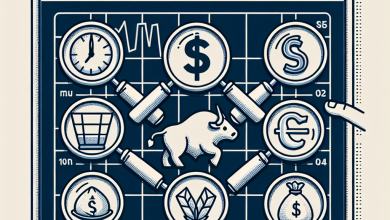
Dollar Remains Stable After Payroll Gains; Euro Declines Amid Weak Data
The U.S. dollar showed stability on Monday, maintaining the gains it achieved following a robust jobs report released on Friday. This week will be significant, with the upcoming release of key inflation data and the minutes from the Federal Reserve’s most recent meeting.
As of 04:00 ET (08:00 GMT), the Dollar Index, which measures the performance of the dollar against a group of six other currencies, was slightly lower at 102.247. It had increased by 0.5% on Friday, reaching a seven-week high, and recorded over 2% gains for the week—its largest increase in two years.
Payrolls Boost the Dollar
The strong growth in U.S. payrolls alleviated concerns about a potential economic slowdown and reinforced expectations that the Fed would not need to implement significant interest rate cuts to aid the economy, resulting in a boost for the dollar.
Traders largely eliminated their bets on a 50 basis point cut at the next Fed meeting, instead pricing in a greater than 90% chance of a 25 basis point cut, as indicated by CME Fedwatch.
The focus for the week includes statements from several Fed officials, additional inflation data, and the minutes from the Fed’s September meeting. During that meeting, the Fed announced a 50 basis point rate cut and the commencement of an easing cycle, though it emphasized that future cuts would depend on economic data.
Analysts from ING remarked that the impressive U.S. jobs report prompted a significant reassessment of rate expectations sooner than they anticipated. They noted that the markets are now aligned with the Fed’s projections, suggesting 25 basis point cuts in November and December.
The dollar’s safe-haven appeal has also been amplified by unrest in the Middle East, particularly following Israel’s airstrikes on Hezbollah targets in Lebanon and the Gaza Strip, coinciding with the one-year anniversary of the October 7 attacks that initiated the conflict.
Weak German Data Hits Euro
In Europe, the EUR/USD pair declined by 0.1% to 1.0965, with the euro weakening after a report indicated that German factory orders plummeted by 5.8% in August, highlighting the economic struggles faced by the eurozone’s largest economy.
Later in the session, Eurozone retail sales for August will be released, providing further insight into consumer behavior during these challenging times. Additionally, remarks are expected from European Central Bank officials, including Chief Economist Philip Lane and board members Piero Cipollone and Jose Luis Escriva. They are likely to echo President Christine Lagarde’s sentiments regarding a swift pace of additional easing.
The GBP/USD pair also saw a slight dip to 1.3113, following a 1.9% drop last week—the steepest decline since early 2023. Bank of England Chief Economist Huw Pill stated that the central bank should adopt a gradual approach to interest rate cuts. This came a day after Governor Andrew Bailey suggested that the central bank might consider more aggressive moves to reduce borrowing costs.
Doubts over BoJ Raising Rates
The USD/JPY pair decreased by 0.3% to 148.22, retracting earlier gains after reaching its highest level since mid-August. The yen is being pressured by rising skepticism about the Bank of Japan’s capacity to continue raising interest rates in the coming months, especially in light of uncertainties surrounding the forthcoming Japanese general elections.
The USD/CNY pair remained largely steady at 7.0176, with Chinese markets still closed for the Golden Week celebrations.
 GOOGL
GOOGL  META
META 


